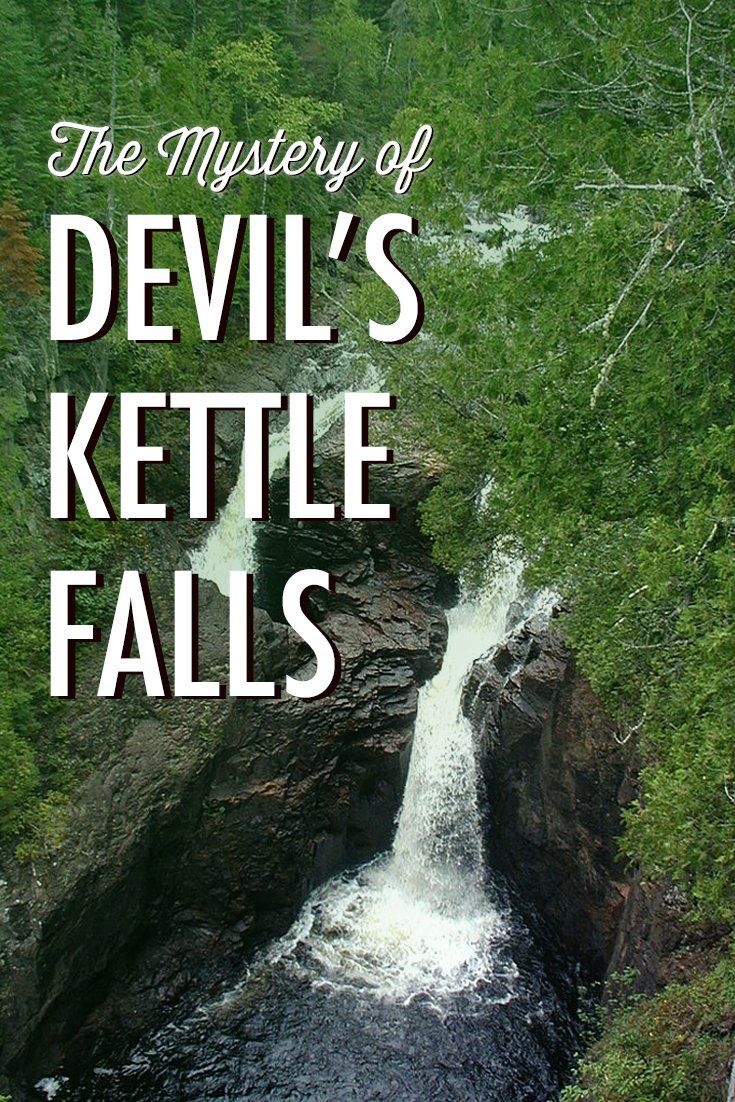Discover the mystery of Devil’s Kettle Falls in Minnesota. Scientists have been puzzled for years about where the disappearing water goes. Read on to uncover the theories!

The Unsolved Mystery of Devil’s Kettle Falls
Hidden deep within Minnesota’s Judge C.R. Magney State Park lies a natural phenomenon that has puzzled visitors and scientists for decades. The Devil’s Kettle is not just any ordinary waterfall—it holds a secret that defies logic. A section of the Brule River vanishes into a massive hole in the rock, and for many years, no one could determine where the water reappeared. The mystery of Devil’s Kettle has led to numerous theories, scientific investigations, and wild speculations, making it one of the most talked-about geological wonders in the United States.
What Makes Devil’s Kettle So Unique?
Most waterfalls follow a predictable course, with water tumbling over rocks and continuing downstream. However, Devil’s Kettle defies this norm. As the Brule River approaches a large rock outcrop, it splits into two distinct streams. One side follows a typical waterfall path, cascading down and flowing downstream. The other side plunges into a deep, gaping hole in the rock, known as the Kettle, and seemingly disappears.
For years, adventurers, researchers, and curious visitors have thrown objects into the Kettle—from sticks and ping pong balls to dye and GPS trackers—only for them to vanish without a trace. This bizarre phenomenon left scientists scratching their heads and fueled legends about hidden caves, underground rivers, and even supernatural forces.
Theories About the Disappearing Water
Over the years, numerous theories emerged in an attempt to explain where the disappearing water might go. Some of the most popular theories included:
1. Underground Caves or Tunnels
One of the earliest explanations was that the water must be flowing into a network of underground caves or tunnels, leading to a hidden underground river. Given that Minnesota has karst landscapes, which are known for caves and sinkholes, this seemed like a plausible theory.
2. A Hidden River System
Some speculated that the water was being funneled into a hidden river system, separate from the Brule River, that flowed miles away before resurfacing. However, no such underground river was ever discovered in the region.
3. A Bottomless Pit
A more dramatic and less scientific theory suggested that the Kettle was a bottomless pit, with the water dropping indefinitely into the depths of the Earth. While this idea added to the mystery, geologists quickly dismissed it as unrealistic.
4. Supernatural or Extraterrestrial Explanations
Some local legends attribute the Devil’s Kettle to supernatural forces, ancient spirits, or even alien activity. While these theories are more fiction than fact, they continue to add intrigue to the site’s mysterious reputation.
Scientific Investigations – The Breakthrough Discovery
Despite years of speculation, the mystery of Devil’s Kettle remained unsolved for a long time. In 2017, researchers from the Minnesota Department of Natural Resources (DNR) decided to conduct a more scientific experiment. They poured a special dye into the Kettle to trace the water’s path and observed the river downstream for any signs of the dye’s reappearance.
Their findings were surprising yet simple: the water does not vanish—it reemerges downstream in the Brule River!The explanation is that the water flows through hidden cracks and fractures in the rock, rejoining the river below. This natural filtration process makes it difficult to track objects thrown into the Kettle, which explains why previous attempts failed.
Why the Mystery Lasted So Long
One might wonder why it took so long to solve the mystery. The main reasons include:
- The complex geology of the area, making underground exploration difficult.
- Inconsistent experiments, where objects tossed into the Kettle may have been caught in debris or eddies.
- Lack of advanced scientific tools in earlier investigations.
Visiting Devil’s Kettle – A Must-See Destination
If you’re a fan of natural wonders and unsolved mysteries, Devil’s Kettle is a fantastic travel destination. The waterfall is located in Judge C.R. Magney State Park, along the North Shore of Lake Superior, making it an ideal spot for hikers and adventure seekers.
How to Get There
- Location: Judge C.R. Magney State Park, Grand Marais, Minnesota
- Trail Length: About 2 miles (3.2 km) round-trip to the falls
- Difficulty: Moderate (steep sections with stairs)
- Best Time to Visit: Spring and fall, when water levels are higher
The hike to Devil’s Kettle is rewarding, offering scenic views, lush forests, and the thrilling anticipation of seeing the famous disappearing waterfall up close.
Final Thoughts – The Mystery Lives On
Even though scientists have provided a logical explanation, Devil’s Kettle still holds a special place in the world of natural mysteries. The waterfall’s enigmatic history, combined with the beauty of its surroundings, ensures it remains a must-visit location for nature lovers, hikers, and those fascinated by the unknown.
Do you think the mystery is fully solved, or is there still more to uncover? Let us know your thoughts in the comments!
Looking for more mysterious places? Check out our latest travel blogs on hidden wonders around the world!

